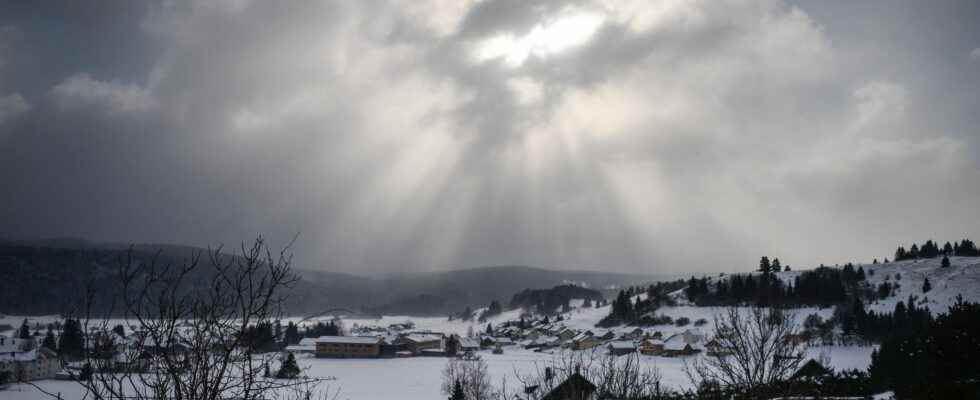Have the temperatures dropped below – 36 degrees in the Jura? On Friday, January 20, up to – 36.3 ° C were recorded at the Combe Noire by the amateur site Météo France-Comtoise. This clearing in the village of Mignovillard, located more than 1000 meters above sea level, is well known for its dizzyingly low temperatures. The forest could never settle there, remember Morning Vosges. “In Combe Noire, it freezes every month of the year”, even goes the communal adage.
This temperature was recorded by the Localsat meteorological probe, a Swiss meteorological research group. In other words, outside the official Météo-France network. Its nearest station, located in Mouthe in the Doubs, about ten kilometers away, still recorded – 18.6 ° C on the morning of January 20. Mouthe is a municipality reputed to be the coldest in the whole country, holding the absolute national record of -36.7 degrees recorded on January 13, 1968.
These are areas in which the temperatures are much lower than in the rest of the territory. They have a name: “cold holes”. As explains Météo-France on its website, “cold holes” are “places, often steep-sided valleys, in which, under certain weather conditions, cold air can accumulate and nighttime temperatures drop below -20°C.” A tendency to cold reinforced by the altitude. This phenomenon is very localized: sometimes it only takes a few meters to see temperature differences in the same area.
Météo-France gives the example of Mouthe. A commune “located at an altitude of 930 m in the bottom of a ‘combe’, a valley in the shape of a large basin in which cold air accumulates in the absence of wind. It is at the bottom of these combes that the thermometer descends the lowest.” In the Jura and the Doubs, two departments which concentrate the most “cold holes”, the Combe du lac de Lamoura, the Combe des Cives at Chapelle des Bois, the plateau of Grandvaux, the plateau of Maîche are also part of these “cold holes”, as well as the Chamonix valley, in Haute-Savoie.
Twelve nights under 0°C at the Combe Noire, in July 2022
The “cold holes”, areas “generally far from any sea or ocean, which gives them a semi-continental climate”, are formed “during winter anticyclonic conditions, with a weak easterly wind and a sky well cleared”, explains Météo-France. “During the night, the air located at ground level becomes colder than the air higher up: this is called a temperature inversion. At night, the ground no longer receives solar radiation and gradually loses energy by infrared radiation. The surface temperature of the ground gradually decreases throughout the night and the air in contact with this cold ground cools in turn. In the valley bottoms, the cold air (heavier than the hot air) then finds itself trapped and accumulates”, details the official service of meteorology and climatology in France.
In addition, the presence of snow on the ground will also play a role in cooling “by accentuating the loss of energy”. In addition, other factors help to cool winter nights even more, such as the fact that the valleys are sparsely wooded or the particular topography of flat-bottomed valleys, a shape of “bowl” which promotes the loss of energy by radiation, specifies Météo-France.
France is not the only country in Europe to hold “cold holes”. La Brévine, a commune bordering France, is known to hold the official cold record in Switzerland with -41.8 degrees recorded on January 12, 1987. The “cold holes” can also record freezing temperatures in the middle of summer. As reported by Météo Franc-Comtoiseaccording to the Localsat scientific group, no less than 12 nights below zero degrees were recorded at the Combe Noire during the month of July 2022. A month nevertheless marked… by a heat wave.
